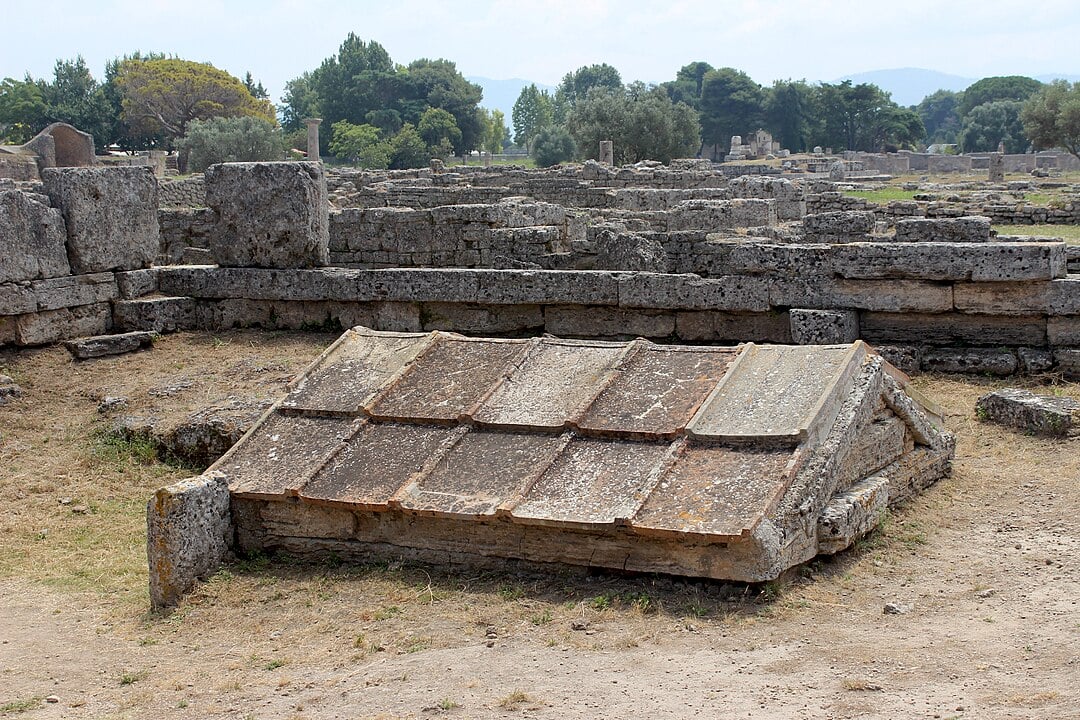Ancient Greek Honey Offering Found in Paestum Shrine Solves 70-Year Mystery
Source: GreekReporter.com

Archaeologists have confirmed that a sticky residue inside 2,500-year-old bronze jars from southern Italy is ancient honey, providing direct evidence of ritual practices at one of Magna Graecia’s most important Greek cities. The discovery resolves a decades-long debate that began when the jars were unearthed nearly 70 years ago.
Discovery at the ancient Greek city
The find comes from Paestum, an ancient settlement on the Tyrrhenian coast founded by Greek colonists from Sybaris around 600 B.C.
Known then as Poseidonia (Greek: Ποσειδωνία), the city flourished for two centuries under Greek control and became renowned for its monumental Doric temples dedicated to Hera and Athena — some of the best-preserved Greek temples in the world.

The jars were recovered in 1954 from a heroon, or hero’s shrine, within the ancient Greek city’s sacred precinct. The shrine likely honored a local figure or mythic founder; some scholars link it to Is[os] of Helice, the legendary founder of Sybaris.
Hero cults were central to Greek religion, where offerings of food, drink, and honey were left for the dead, viewed as intermediaries between mortals and the divine.
Honey’s role in Greek ritual and life
Honey occupied a unique place in Greek culture. It was prized as food, used in cosmetics and medicine, and carried symbolic associations of purity and immortality.
Ancient writers frequently described honey as a “superfood,” and it featured in offerings to gods and heroes alike. The presence of honey jars in a heroon fits with this broader ritual landscape, which at Paestum also included altars, wool-wrapped iron rods, and wooden tables found alongside the vessels.
Earlier tests failed to solve the puzzle
When the bronze jars were first excavated, archaeologists suspected they contained honey based on their form and context. However, multiple scientific tests over the next seven decades failed to detect sugars, leaving the theory unproven.

The residue was long described simply as “sticky goo,” and the lack of results made the jars one of Paestum’s enduring mysteries.
Modern analysis confirms the honeycomb contents
A team led by Luciana da Costa Carvalho, a chemist at the University of Oxford, revisited the question using advanced mass spectrometry. The method allowed researchers to identify specific molecules within the residue.
For the first time, they detected intact hexose sugars — the dominant sugars in honey — as well as royal jelly, a nutrient-rich secretion made by worker bees.
The team also identified peptides, short amino acid chains that are molecular markers unique to the European honeybee (Apis mellifera). Together, these findings provided conclusive evidence that the jars once held honeycomb rather than another organic substance.
“What I find interesting is that the ancient Greeks did think that honey was a superfood,” Carvalho said in a statement, underscoring its cultural and ritual importance.
Copper ions preserved the ancient honey
The study uncovered another unexpected detail: copper ions were present in the residue. These ions are biocidal, meaning they kill microorganisms.
Carvalho noted that this property likely helped preserve the sugars for millennia, allowing traces of honey to survive in the jars despite burial conditions.
Fresh honey today contains about 79 percent hexose sugars, mostly fructose. The ancient sample had far lower sugar levels, likely because of degradation over time. Carvalho suggested the honeycomb would have tasted more acidic than modern honey, though she added she did not attempt to taste it.
Significance for archaeology and museum collections
The findings, published July 30 in the Journal of the American Chemical Society, highlight the value of revisiting old excavations with new technology. The ability to identify honey at the molecular level demonstrates how scientific advances can transform understanding of long-studied artifacts.
Paestum’s broader archaeological landscape — including its temples, defensive walls, and painted tombs — provides vital context for the discovery. While later cultures, including the Lucanians and Romans, left their mark on the site, the honey jars offer a rare glimpse into early Greek ritual life in Italy’s “boot.”
“This study shows the value of reexamining museum collections as scientific techniques advance,” Carvalho said.
The original article: belongs to GreekReporter.com .
